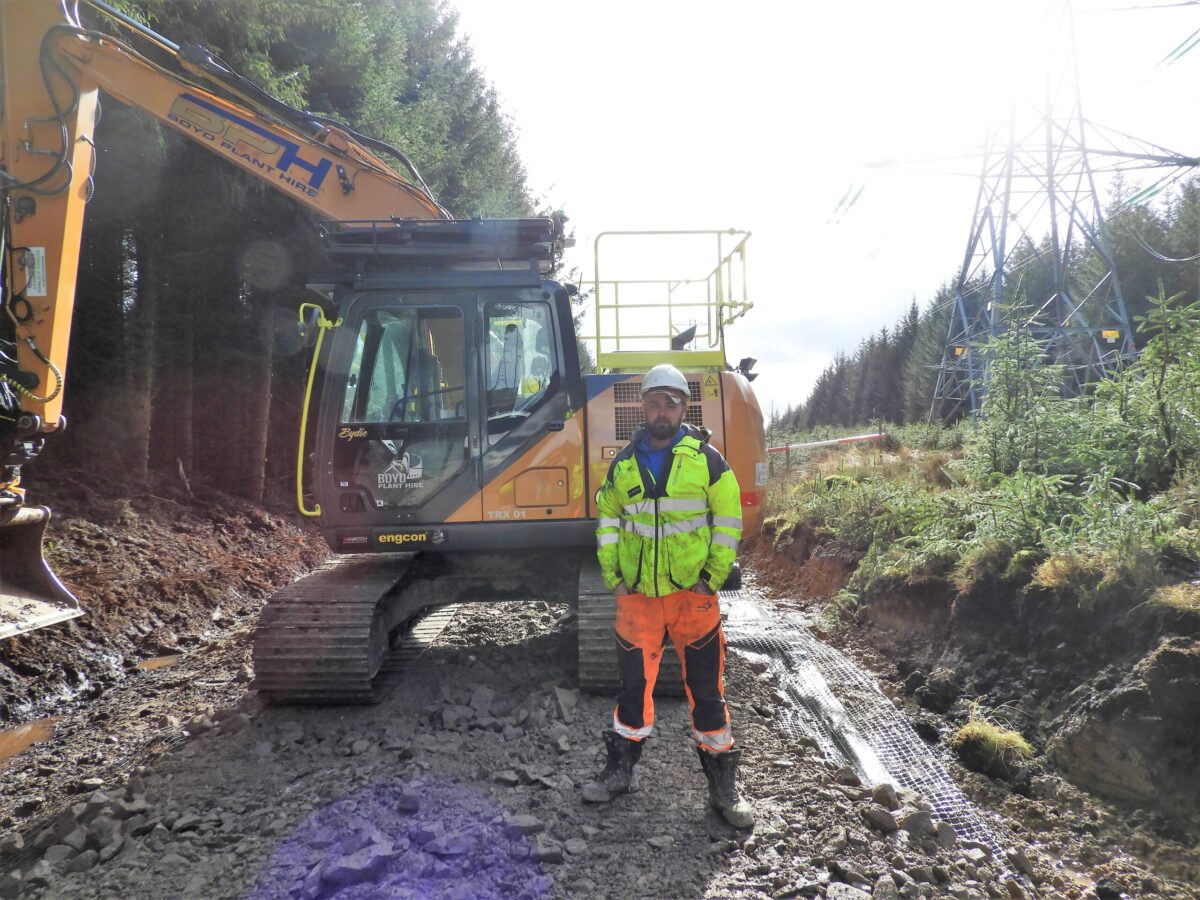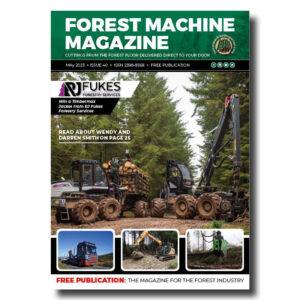Talking about forest roads to anyone involved in timber harvesting or timber haulage, gets a similar reaction to someone waving a red rag to a bull.
“The roads are in a shocking state with deep ruts and potholes the size of craters, they are too narrow for timber lorries to travel on or not wide enough to get their stabilising legs fully extended or have loads of sharp stones causing punctures and damage to tyres.”
Another gripe you hear frequently “They have millions to spend on cycle tracks and footpaths but sod all to invest in the bit that makes the money!”
The lack of maintenance to roads might make a foresters books look more profitable, but to us who work in the forest, it creates untold hag. Maintenance vehicles have difficulty accessing sites, some fuel suppliers will not deliver, and we end up having to track machines for miles to take our diesel tanks to the nearest tarred road for refilling. Most importantly though is that emergency vehicles will struggle to get to sites in the case of accidents or fires.
From the 1970’s to the turn of the century most forest districts had a road squad. Each squad was tasked with keeping the roads in good order and building new ones. The infrastructure and conditions of the forest roads was excellent as each squad was comprehensively equipped with tipper lorries, excavators, dozers and road graders.
I recently visited Durris Forest near Stonehaven in the Northeast of Scotland where a huge contract was underway to create many miles of new forest roads. The new roads were being built for access so that all the cables on the electricity pylons could be replaced.
The forests on the Northeast coast of Scotland usually have a mineral podzol type of soil which is quite dry and acidic making them ideal for growing pine trees. Durris forest was not typical of the area, it was predominately Sitka Spruce planted on wet, peaty soil with visual evidence of vast areas of windblown trees caused by recent storms. I was quite interested to find out how the roads were made and the pitfalls that had to be overcome when working on boggy ground.
From the main road, it was an uphill drive of about two miles, to where Ayrshire based company Boyd Plant Hire, was sub-contracting to John Marshall & Sons, a plant and fencing contractor also based in Ayrshire.
-
That’s a remarkable amount of work hours for a single machine, the Norcar 600 owned by Erkki Rinne is taken well care of, it even has the original Diesel engine.
-
Kieran Anders is a forestry contractor working in the lake district. His work involves hand cutting and extracting timber using a skidder and tractor-trailer forwarder.
-
It is not possible to eliminate chain shot, but there are simple steps that can be taken to reduce the risk.
-
Arwel takes great pride in the fact that the mill has no waste whatsoever, “the peelings are used for children’s playgrounds, gardens and for farm animals in barns in the winter and the sawdust has multiple uses in gardens and farms as well.
-
Timber hauliers need to encourage young blood in, and also look after the hauliers we have, we need make the sector a safe and positive place to work.
FIND US ON
Related Posts
Allan Marshall of JMS Ltd, had two ten tonne Wacker Neuson Dual View dumpers carrying the six-inch stone – which was brought in by lorry from a local quarry – to Chris Boyd, Boyd Plant hire, who was working on a new section of road. Chris was using a CASE CX130D 13.8 tonne excavator with an X hitch, Engcon tilt rotator and a height restrictor. The height restrictor is a safety device where pre-set height limits can be set with an audible alarm or motion cut off to safeguard operators when working under electricity cables or other overhead obstacles. This is unfamiliar territory for me, I have only operated excavators a handful of times and those mostly with a dangly bit stuck on the end of the dipper boom that felled and processed trees. 😊

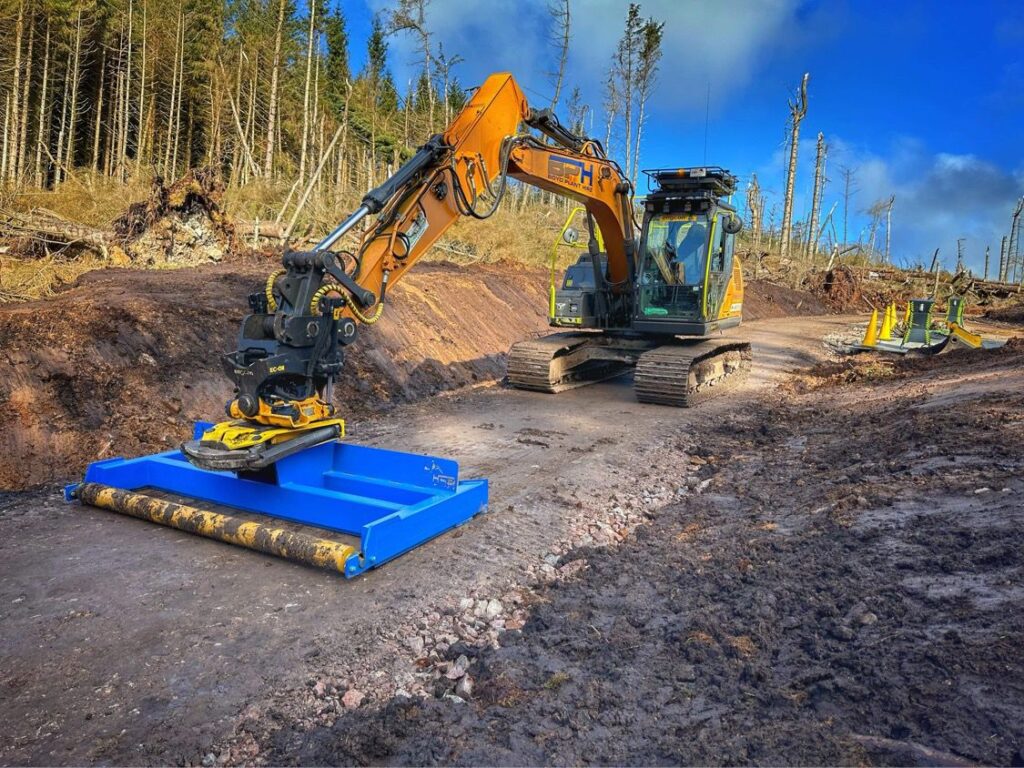
Boyd Plant Hire has two CASE CX130D excavators, the one working in Aberdeenshire and the other operated by Chris’s brother, John. The other CASE is currently on hire at a building site in Kilmarnock. Both are full-sized, conventional excavators, loaded with features and plenty of power from the Isuzu engine, making them well suited for a wide range of utility, groundworks and residential work.
Chris has currently three years’ work in front of him in the Northeast and it was easy to see why as he was one of the best excavator operators I have seen yet. He has over 15 years’ experience on excavators prior to establishing Boyd Plant Hire in 2019. He is highly experienced in forestry work as has carried out a lot of work at the Douglas Windfarm excavating the bases and constructing access roads. He has also carried out all types of groundworks during his career including Drainage and Sewer works, Pipe and Cable tracks and building site excavations.
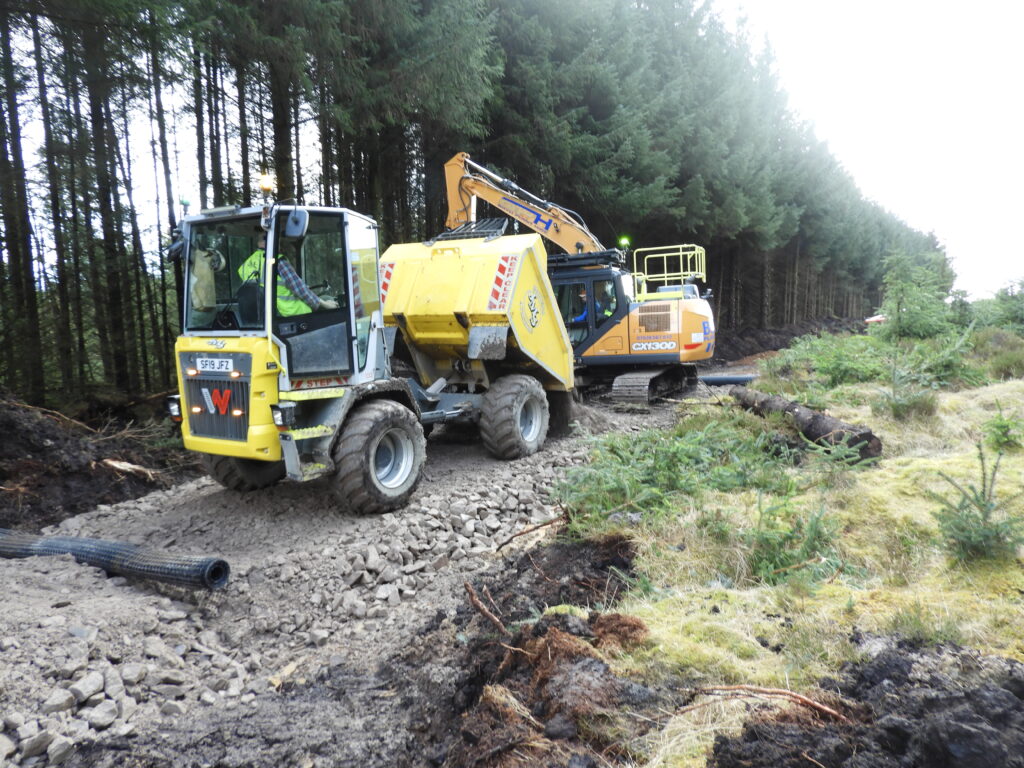
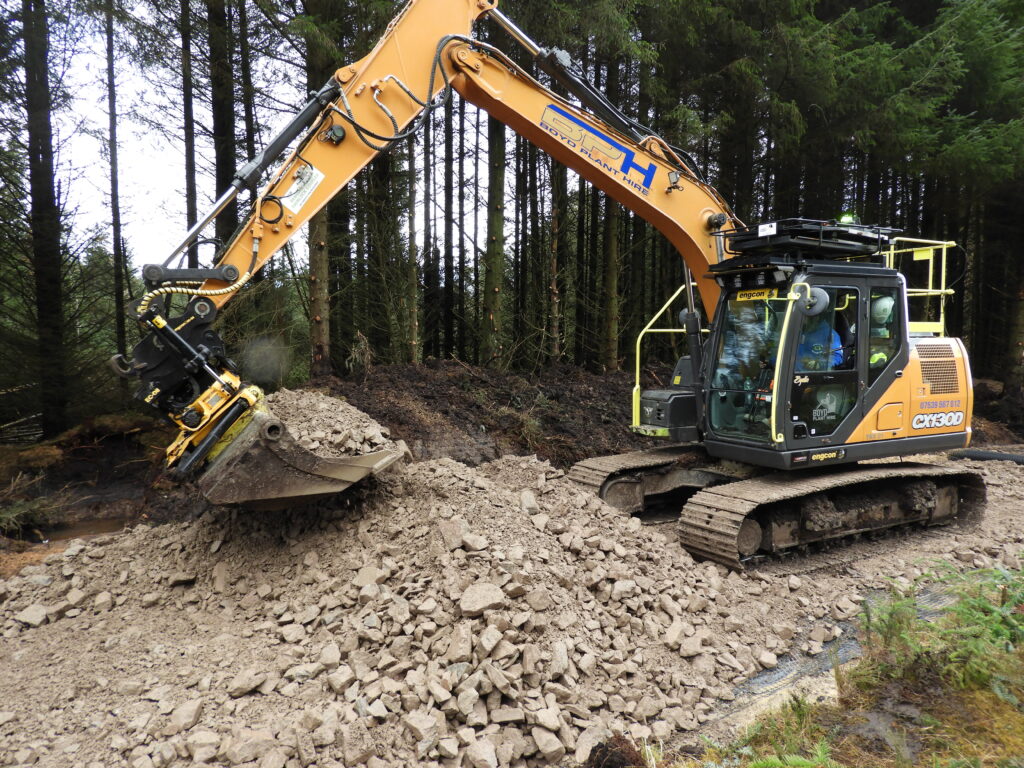
His excavator was three years old (the other excavator working in Kilmarnock is brand new) but looked in showroom condition, the paintwork was immaculate and there was not a visible scratch or dent to be seen anywhere. When I questioned Chris on the pristine condition he admitted to washing, waxing and polishing it on a regular basis. He is delighted with CASE and has used their machines for many years. They have proved to be exceptionally reliable, have an excellent back up service and are a great all-round versatile tool for the work they carry out.
Chris was smooth but quick on the controls and made laying the road look easy when in effect maintaining a constant depth and width of is much more difficult than it looks. Prior to the road being laid, he opened a drainage channel on both sides and removed the top layer of humus and peat. Plastic cundies were put in to assist with drainage from the high to the low side wherever they were needed. The drainage channel on the low side of the road joined up with the many main forest drains to prevent any accumulation of water. The heavy-duty Doram sheeting was expertly rolled out without damage using the excavator bucket. The sheeting prevents water and peat coming up through the stone and swamping the road. Once the layer of stone was spread on top of the sheeting, a dual plastic grid sheet was rolled out which is designed to lock in and confine the aggregate. It sounds quite complicated, but in fact it was a quick process.
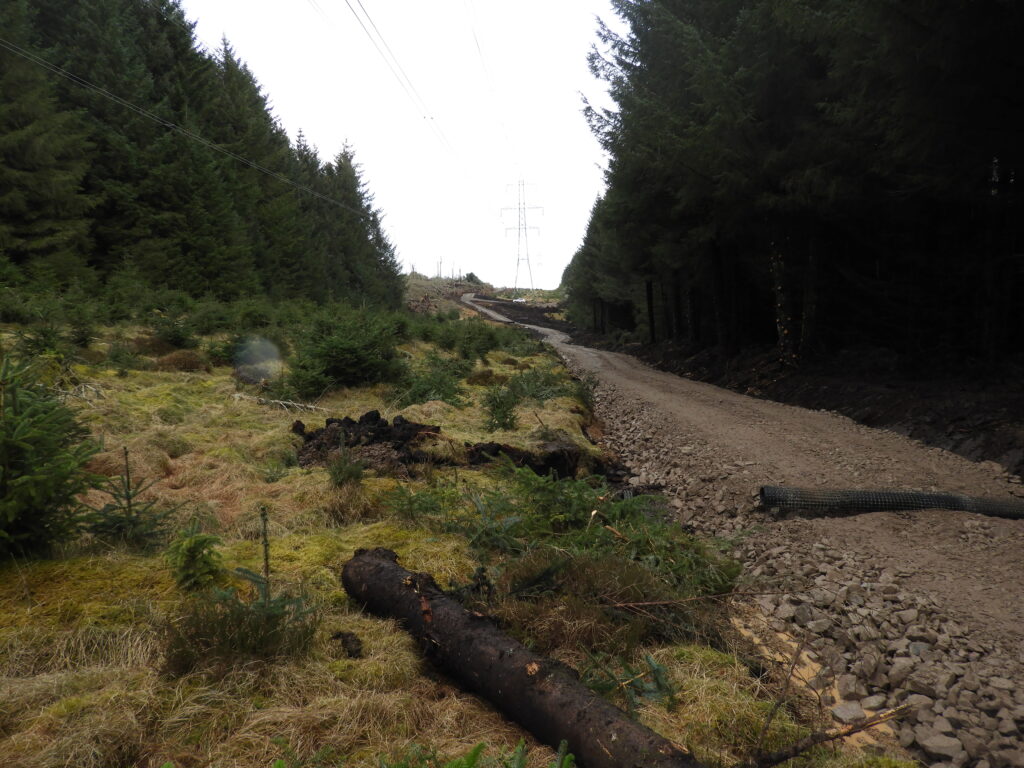
The dumpers were not carrying the aggregate far and there never appeared to be a break in the stone arriving. Many operators would have been stressed out at working under this kind of pressure, but Chris was taking it in his stride and was actually enjoying himself. I was surprised at just how quickly the road was being formed, Chris was completing a remarkable 100m of road per day. With it being such a long distance from home Chris stays away for two weeks at a time working twelve on and two off and usually works 12 hours each day.
My only gripe would be that the road was just 3.5m wide. This is nothing to do with the contractor as they carry out what is stipulated in the contract. This usually comes direct from the landowner who is trying to save a few bob. At 3.5m it is a bit tight for manoeuvring articulated timber lorries, especially in the dark or in wintry conditions, even wagon and drags will struggle to get their stabilising legs fully extended when using the crane for loading. An extra half meter would make the world of difference to our hauliers! There was a few thousand tonne of blown timber needing to be cleared up that I could see, and this road would eventually be used for timber lorries as well, so it would of made sense to fact this in.
This was an interesting trip and I enjoyed broadening my horizons and learning a bit more regarding another side of the industry.
www.boydplanthire.co.uk
Forest Machine Magazine is written and edited by a forest professional with over 40 years hands on experience. We are dedicated to keeping you informed with all the latest news, views and reviews from our industry.
To support us you can subscribe to our bi-monthly magazine which is delivered to your door from only £15 per year.
Subscribe here
#homeoflogging #writtenbyloggersforloggers #loggingallovertheworld
-
 Issue 40£0.00
Issue 40£0.00

